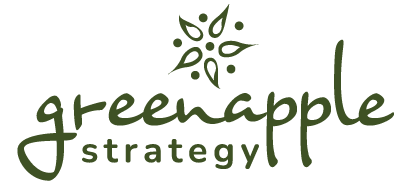We all love the feeling of a positive review, that virtual pat on the back that validates the hard work we put in. But online reviews are far more than just feel-good moments. In today’s digital landscape, they’ve become one of the most trusted forms of marketing.
Think about it: when you’re considering a new restaurant, a local service, or even a B2B software, where’s one of the first places you look? Those star ratings and customer testimonials carry serious weight.
In fact, studies from 2025 show:
- 95% of consumers read online reviews before making a purchase. (Source)
- 88% trust online reviews as much as personal recommendations. (Source)
- Businesses with 10 or more reviews see a 15-20% increase in search traffic. (Source)
Whether you’re a small B2B company or a national B2C brand, reviews matter. But here’s the good news: If you already have happy customers, you’re sitting on a goldmine of growth potential. All you need is the right strategy to tap into it.
Let’s explore why reputation marketing is worth the investment and how you can turn positive feedback into one of your strongest marketing tools.
What is Online Reputation Marketing?
Online reputation marketing is the process of managing your brand’s online presence using positive customer feedback as a marketing asset. It’s the difference between having great reviews and actually leveraging them across your website, social channels, and sales funnel to drive real results.
Why Reputation Marketing Deserves a Spot in Your Strategy
Investing in actively managing and leveraging your online reputation offers significant benefits for both B2B and B2C businesses. Here are just a few reasons why reputation marketing should be on your radar:
1. Builds Trust Faster Than Traditional Tactics
People trust people. When potential customers read a glowing review from someone like them, it removes doubt and instantly builds confidence. For B2C brands, this can mean the difference between a browse and a buy. For B2B businesses, this can shorten the sales cycle and strengthen lead quality.
2. Boosts Visibility in Search Engine Results
Customer reviews build trust and boost your visibility. When reviews are embedded on your website or show up on platforms like Google, they signal credibility to search engines. This helps your business rank higher in organic search results.
3. Provides Insight for Continuous Improvement
Not all reviews are sunshine and rainbows, and that’s a good thing. Negative or neutral feedback can provide valuable insight into operational gaps, customer frustrations, or unmet expectations. The smartest brands see reviews as a chance to listen, learn, and improve.
Turning Positive Reviews into a Powerful Growth Tool
Now, let’s dive into actionable strategies for harnessing the power of your positive reviews:
1. Display Reviews on Your Website
Don’t hide your glowing feedback! Embed Google Reviews directly on your website to build trust and improve SEO. You could place snippets of powerful testimonials or visually appealing graphics of positive reviews throughout your site, especially on key landing pages. Remember to optimize the alt text of any review images for search engines.
2. Amplify Positive Voices on Social Media
Social media is where your brand’s personality comes to life, and reviews fit right in. Share screenshots of standout testimonials, create simple graphics with quotes, or even spotlight a “review of the week.” If customers tag you in posts or leave video feedback, that’s even better! Social media tools like Mention or BuzzSumo can help you monitor brand mentions and discover user-generated content worth sharing.
Want to take it a step further? Reach out and ask for permission to feature that content in a bigger way. Many customers are thrilled to see their words shared.
3. Turn Testimonials into Compelling Content
Go beyond simply displaying star ratings. Weave compelling quotes and anecdotes from positive reviews into your marketing materials. At Green Apple, we regularly feature customer success stories on our clients’ blogs and create short testimonial videos for use across all platforms. Real customer voices are incredibly persuasive.
4. Incorporate Reviews into Sales Conversations
Equip your sales team with content such as positive testimonials and case studies featuring satisfied customers. Sharing relevant reviews during the sales process can help overcome objections and build confidence in your product or service.
5. Encourage Reviews With Purposeful Campaigns
Sometimes, your biggest fans just need a little nudge. That’s where review-generation campaigns come in. Whether it’s a fun incentive, a thank-you giveaway, or a heartfelt ask, inviting customers to share their experiences can have a powerful ripple effect.
Need proof? Keep reading.
Case Study: Online Reputation Marketing for a Preschool
The Gardner School, a nationwide leader in early childhood education, partnered with Green Apple to amplify its positive parent feedback. Recognizing the critical role of Google Reviews in building trust with prospective families, we designed the “Share the Love” campaign.
Aligned with Valentine’s Day, the campaign encouraged parents to share their love for The Gardner School and its teachers through Google reviews for a chance to win a grand prize. Personalized messaging was shared through the school’s communication platform and engaging social media posts.
The results were remarkable:
- 210 new Google Business Profile reviews in one month
- A 1,741.67% increase in reviews across all locations compared to the entire previous year
- An average star rating improvement of 21.38%
- Ratings across schools increased to 4.86 stars
Most importantly, the campaign strengthened relationships with current families and created a powerful wave of positive social proof to attract new students.
Want to learn more? Get a deeper dive into the case study here.>
Ready to Build a Review Strategy That Works?
Positive reviews are powerful marketing tools that can build trust, boost visibility, and strengthen your brand from the inside out. If you want to integrate reviews into your website, highlight them on social media, or launch a campaign like TGS’s “Share the Love,” we can help.
At Green Apple Strategy, we combine creative talent with strategic insight to turn good ideas into great results. Let’s work together to build a review strategy that drives real impact.
Contact us today to schedule a consultation. We’d love to help your brand grow through online reputation marketing—one five-star review at a time.





